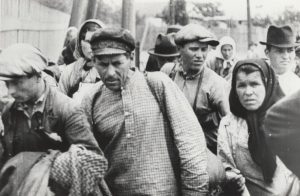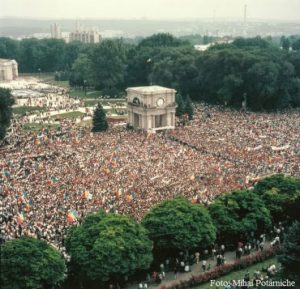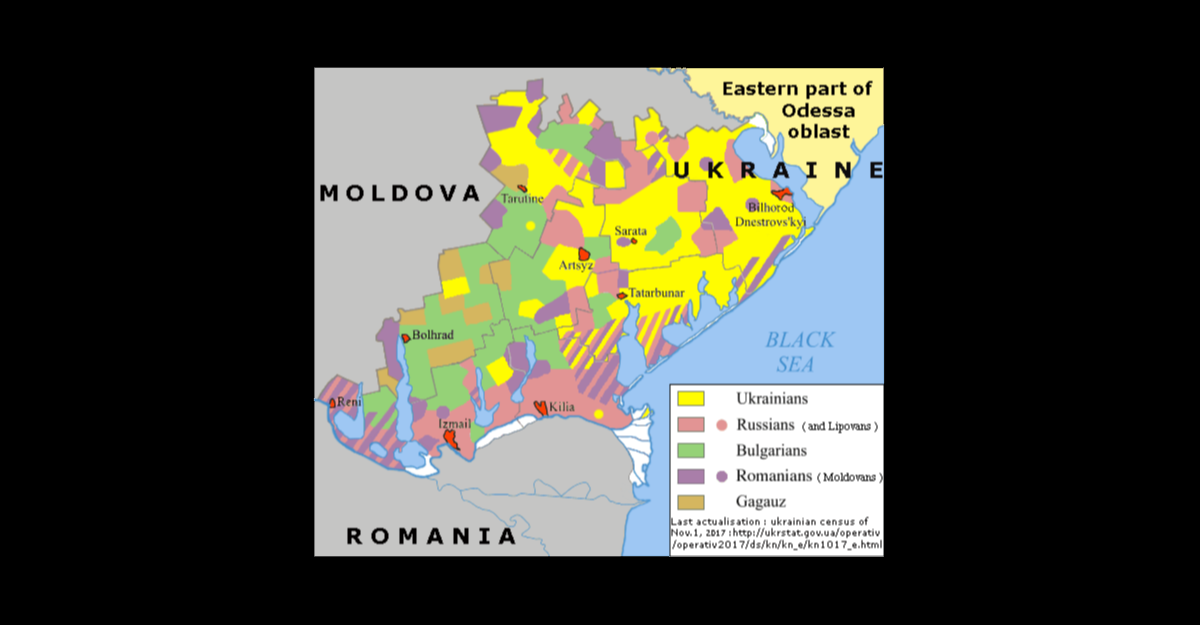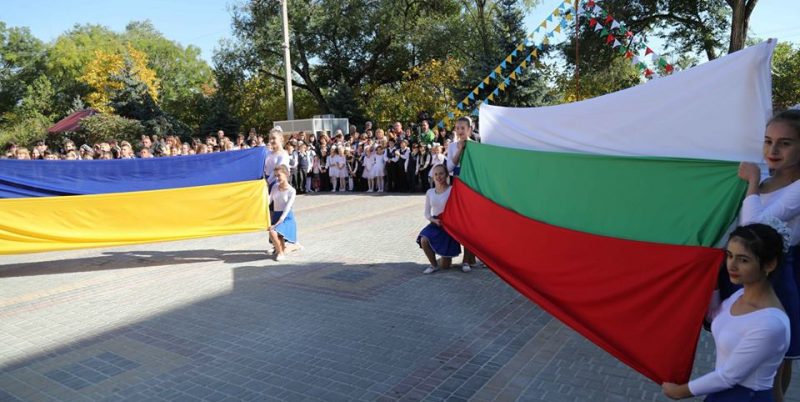Unlike Estonia, Latvia and Lithuania, who finally have begun to prepare for the coming Russian invasion, unlike Sweden, who remains stuck in Cloud Cuckoo Land about Gotland not being a prime target for Putin’s war machine, and unlike Poland
, who knows Putin will strike it at the same time he attacks the Baltic States, Romania is safe from a Russian attack. Even the most rabid Russian nationalist leaders do not envision Romania to be part of the Greater Russian Reich, and Romania has no territory Putin needs to keep his conquests safe.
Romania’s government and military leadership know this, but over the last 12 months no other NATO member has increased defense spending as much as Romania: from 1,36% of GDP in 2014 to 1,7% of GDP in 2015 and to 2% by 2017. And even that is not enough as all parties and Romania's president Klaus Iohannis agreed on 13 January 2015, when they signed an agreement:
- to increase defense spending to 2% of GDP by 2017,
- to keep that level for the following ten years,
- to raise it even further if resources allow it, and
- to develop cooperation projects involving foreign companies.
If Romania was not shackled by its deal with the IMF to keep its budget deficit under control, and if Romania’s proposal to exempt military procurement from the EU’s 3% budget deficit limit had not been vetoed by Angela Merkel, Romania would spend even more on defense – much more! And the reason is that Romania understands it will have to fight Russian troops on Ukrainian soil, it will have to sink Russia’s Black Sea Fleet, and it must prepare for Russian missile attacks, including with nuclear warhead carrying missiles. If you do not believe me, then I have one word for you to ponder: Moldova.
The Principality of Moldavia was and always has been an integral part of the lands settled by the Romanian people. The Principality of Moldavia, Principality of Wallachia and Principality of Transylvania were and are the core of the Romanian nation, but Russia again and again has occupied, split, subjugated, oppressed and ethnically cleansed Moldavia. In 1812 Russia forced the Ottoman Empire to cede the Eastern half of the Principality of Moldavia, renamed by Russia as Bessarabia and located between the Prut and Dniester River. To rid itself of the Romanian population Russia in 1834 banned the Romanian language from schools and government, which was soon followed by a ban of Romanian in churches, media and books. Those who protested or continued to use their native language were deported to Siberia.
In 1856 after the Crimean War, the Treaty of Paris returned a small Southern part of the occupied territory to the United Principalities of Wallachia and Moldavia. However following the Russo-Turkish War of 1877–78, Russia threatened Romania into returning that Southern part – despite Romania and Russia having been allies and even though before the war Russia had signed a treaty with Romania to respect its territorial integrity. Still, by Russia's perfidious logic, it argued that although it had agreed to respect the territorial integrity of Romania as defined by the Treaty of Paris, by attacking the Ottoman Empire, Russia had broken that treaty; and since Romania had approved of said attack, Romania also had broken and voided the Treaty of Paris, thus giving Russia the right (!) to redraw the borders of Romania at will.
Only in 1917 with the collapse of the Russian Empire was Romania able to free Bessarabia from Russian occupation and return the right to use its mother language to the 80% of the population oppressed for over a century by Russia. Although almost 200,000 Romanians lived in the villages and cities on the Eastern side of the Dniester, Romania did not cross the river as the Dniester was the historic border of the Principality of Moldavia and an excellent line of defense against the Soviets and their wars aimed at forcing all the nations, of the former Czarist empire, which they despised and had just destroyed, back under their bloody, brutal rule.
The Soviet Union never recognized the unification of Romania, and in September 1924 Soviet agents staged an uprising in Bessarabia, which was to serve as pretext for the Red Army to invade Bessarabia. But Romania reacted swiftly and energetically and within three days eliminated the Soviet "Little Green Men," who had crossed the Dniester to play Bessarabian peasants. 3,000 people were killed and Romania arrested 1,600 "rebels." Reeling from this defeat and intent on one day annexing Bessarabia once more, the Soviets created the artificial Moldavian Autonomous Soviet Socialist Republic (MASSR) from 9,000km² of Ukrainian territory and 4,000km² of Romanian and Ukrainian settled areas along the Eastern side of the Dniester; neither area of which had ever been part of the Principality of Moldavia. The same year the Soviet Union declared that Bessarabia was “temporarily occupied by Romania” and one day would be “reunited with Russia.” The Soviets decreed that the Romanian people in the MASSR were actually not Romanians, but Moldavians and that they did not speak Romanian, but a distinct Moldavian language, which was to be written in the invented Moldovan Cyrillic alphabet. With a brief intermezzo between 1932 and 1938 when Romanian was re-introduced in Moldavia, this artificial language and alphabet remained forced upon the Moldavian Romanians until 1989.
While people on the Eastern Soviet-controlled bank of the Dniester were oppressed, deprived of their language and culture, deported to Siberia, and executed in large numbers, Bessarabia inside Romania was at peace until 1939, when Hitler and Stalin signed their pact to divide Eastern Europe between them. As part of this criminal pact, which was praised by Putin in November last year, the Soviet Union threatened Romania on 26 June 1940 with war if it would not cede Bessarabia, the Northern Bukovina and the Hertza region to the Soviet Union within 24 hours.
The ultimatum Moscow issued to Romania is worth citing, as such lies are still typical for the current Russia:
“Now that the military weakness of the Soviet Union is a thing of past … and in order to create a solid foundation for peace between nations, the Soviet Union considers it necessary and appropriate, in the interest of restoring the truth, that Romania immediately return Bessarabia to the Soviet Union. The Soviet Government considers that the issue of returning Bessarabia is linked to transfer of the northern part of the Bukovina.… Such an act would be more than fair as the transfer of the northern Bukovina to the Soviet Union would be a compensation, even though truly an insignificant one, for the great loss that was caused to the Soviet population of Bessarabia by their 22-year domination by Romania.”

Romania surrendered and by 3 July the Soviet Union had occupied Bessarabia once again. 70,000 people fled to Romania within the first days, while the Soviets immediately arrested or executed everyone not to their liking: in the first year of the occupation 8,360 people were murdered, more than 24,000 sent to the GULAG and over 90,000 deported to Siberia. As soon as the Soviet Union had taken control of the border, people attempting to flee to Romania were shot on the spot and in one case 2,000 people were killed in one day. Every priest was executed and naturally the Romanian language was banned and the artificial Moldovan Cyrillic alphabet forced upon the population. Romanian names were russified and so i.e. Chișinău became Кишинэу, a transcription of the Russian spelling Кишинёв into the Moldovan Cyrillic alphabet.
On 2 August 1940 the Soviet Union merged the Moldavian Autonomous Soviet Socialist Republic with Bessarabia to form the Moldavian Soviet Socialist Republic (MSSR), which lost the 9,000km² of Ukrainian territories that had been artificially attached to the narrow Romanian settled strip of land along the Eastern shore of the Dniester in 1924. As the Soviet Union had deported tens of thousands of Romanians and settled tens of thousands of Russians along its side of the Dniester, the ethnic makeup of the region had been massively altered, but by adding Bessarabia, Romanians still made up the absolute majority of the population of the new MSSR.
In 1941 Romania, allied with Nazi Germany, regained Bessarabia, but lost it again to the advancing Red Army in 1944. In 1949 the Soviet Union deported another 35,000 people to Siberia and from then on, whoever dared to declare himself to be Romanian in the Soviet census faced massive repercussions by the Soviet regime. Only Moldavian was an acceptable ethnicity for Romanians under the Soviet regime.

With the fall of the Soviet Union Moldavians began their path to reunification with Romania. The first successes were the return to the Latin alphabet on 31 August 1989, the raising of the Romanian (!) flag over the Moldavian parliament on 27 April 1990, the Declaration of Sovereignty on 23 June 1990 and finally the Declaration of Independence on 27 August 1991 as Republic of Moldova. However, aware that reunification with Romania was inevitable, Russia immediately began to stir up ethnic tensions to keep a foothold for its armed forces near the Romanian border.
The Russian campaign focused on the Russian and Ukrainian ethnic groups along the Eastern shore of the Dniester, where Moldavians only accounted for 40% of the population. Fears were stoked about the removing of Russian as an official state language and the possible reunification of Moldavia and Romania. Soon a pseudo-parliament was created in Tiraspol, which declared the independence of the 4,000km² area on the Eastern shore as Transnistria. Although Russians were and still are just 25.5% of the Transnistrian population (Moldavians 36.5%, Ukrainians 30.4%), a sham referendum staged by Russia in 1990 resulted in, according to Russian propaganda, 79% of voters turning out and 95.8% of them voting for an independent Transnistria.
Next Russia’s intelligence services brought Russian mercenaries, volunteers and Cossacks to Transnistria, where they were armed by Russia’s 14th Guards Army. Russia began its war on 2 March 1992, the same day Moldova was admitted as a member of the United Nations and thus fully recognized by the nations of the world. As the first act of war, Russian Don-Cossacks occupied the police station in the city of Dubăsari. Among those Cossacks was a certain Igor Girkin (aka Strelkov), who led the occupation of the police station in Sloviansk in Ukraine on 12 April 2014, thus beginning the war in Donbas.
Although Transnistrian troops received tanks, heavy artillery and massive amounts of light weapons from Russian equipment stores in Transnistria, the fighting was too restrained for Russian tastes and so the Russian vice-president Alexander Rutskoy visited Transnistria in April 1992 and publicly encouraged the separatists to fight harder and assured them of Russian support [video]. Of course in Russia this speech is considered a heroic act, well within international law, unlike, e.g., John McCain’s private visit to Euromaidan, which Russia considers "an unacceptable foreign intervention." Ultimately the war resumed with increased intensity and was decided when Russia’s 14th Guards Army began to shell Moldovan positions at night with massive artillery barrages from its bases. In yet another echo of the current conflict in Ukraine, Russia at the time declared that its 14th Guards Army was merely helping Transnistrian civil defense fight “Moldovan fascists."
Moldova understood it could not withstand the 14th Guards Army and therefore on 21 July 1992 Russia, which had insisted until then that it was "an uninvolved party," and Moldova signed a ceasefire agreement in Moscow, which gave Russia the right to keep troops in Transnistria to “monitor the ceasefire.” Thus Moscow had succeeded in creating, stoking and then "resolving" a conflict, which (a) prevented the reunification of Moldova and Romania, (b) kept Moldova in limbo as every move westwards was answered by threats of renewed fighting by Transnistria, and (c) gave Russia a base for its army and spies to operate against Romania and Ukraine.
Since 1992 all attempts to resolve the conflict have been stymied by Russia, whose only proposal to resolve the conflict came in 2003. At that time Putin through his advisor Dmitry Kozak suggested that Moldova "federalize" as follows: Transnistria would be fully independent from Moldova, but retain veto power over all constitutional changes Moldova might undertake, and Russia would be allowed to keep troops in Moldova. Moldova wisely refused this clear attempt to destroy it as an independent and sovereign nation.
Today Transnistria is a mafia-controlled enclave from which Russia dispatches terrorists to place bombs in Ukraine’s port city of Odesa on the Black Sea. Russia also uses Transnistria as a hub for its attempts to stir up the population of Moldova’s Autonomous Territorial Unit of Gagauzia into open rebellion. Furthermore Russia uses Transnistria to corrupt and subvert Moldova proper, especially through anti-EU, anti-NATO and anti-Romanian propaganda, bribes and massive corruption of political parties. In Transnistria media is oppressed, police torture is common, Protestant churches are persecuted, elections are a farce, Moldovan and Romanian schools are harassed and shut down. Russification continues, as does anti-Romanian discrimination.
After playing by Moscow’s rules for 22 years Moldova finally decided to ignore Russia’s threats and agreed to sign an EU Association Agreement. Unlike Ukraine's Yanukovych government Moldova resisted a massive amount of Russian blackmail and threats and bravely signed the Agreement on 27 June 2014. In response Russia unleashed a massive anti-EU campaign inside Moldova and banned Moldovan wine, meat and vegetables, to punish Moldova for not having “consulted with Russia” about its sovereign right to sign a trade agreement.
For the elections held in Moldova in November 2014, Russia dispatched Moldovan “businessman” Renato Usatii to his home nation and financed his election campaign with at least € 400,000. After his party was disqualified for having accepted Russian money as well as for having ties to Russian criminal syndicates, Russia threatened to cut off gas deliveries to Moldova and hinted it might “tighten ties” with Transnistria. Since then Russia’s pressure on Moldova has increased even further: military maneuvers in Transnistria, threats to expel the 500,000 Moldavians working in Russia and a massive intervention to have a pro-Russian candidate elected in Gagauzia all demonstrate that Russia will do everything possible to destroy Moldova, rather than let it move westward.
Three weeks ago Moldova’s Defense Minister Viorel Cibotaru stated that Moldova faces the threat of a Russian instigated, managed and led hybrid war, if Moldova stays on its pro-EU path. He admitted that Moldova’s military is atrociously unprepared to defeat any kind of Russian attack, as Moldova spends a laughable $21.5 million on defense in 2015, a mere 0.25% of GDP. That is an eight of what NATO considers to be the minimum needed to maintain a proper military. In other words if Putin wishes to attack Moldova from Transnistria, or if Putin decides to have the Russian military intelligence service stage an uprising in Gagauzia, Moldova cannot defeat such an attack. Not without Romanian help.
If Romania should help Moldova, Putin has a pretext to open a corridor to Transnistria by landing Russian forces in Odesa, which means there will be a Russian-Ukrainian/Romanian/Moldovan war. Or Putin may not even wait for a pretext and just attack Ukraine: either by amphibious landing in Odesa to create a corridor to Transnistria or an attack on Mariupol to open a corridor to Crimea. Whichever it is Romania will intervene to save its people in Moldova from yet another century of enslavement by Russia.
And that is why Romania prepares to fight Russian troops in Odesa Oblast, plans to sink the Black Sea Fleet on the way to Odesa, thinks about how best to overrun Russian bridgeheads on the Western side of the Dniester, and is so grateful to America for having installed a Ballistic Missile Defense system on Romanian territory.
Now that you understand what the word “Moldova” means to Romanians, I will explain next where and how they will fight Putin’s fascist horde.





